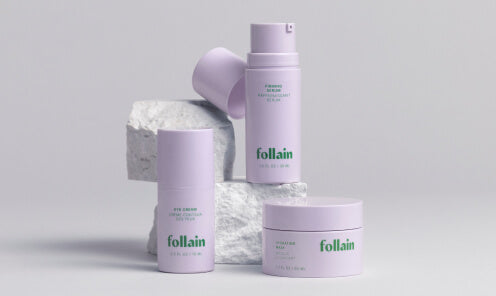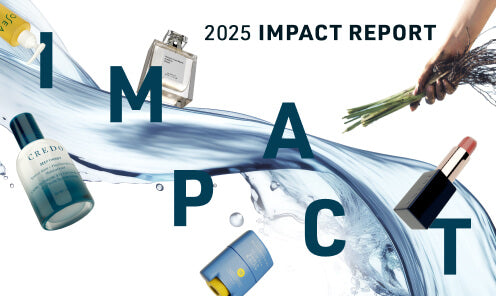By Mia Davis, VP of Sustainability and Impact at Credo
First– what are PFAS?
Per- and polyfluoroalkyl substances (PFAS) are a class of synthetic chemicals which have been linked to cancer, thyroid disease, liver damage, decreased fertility, and hormone disruption. They were first made in the 1940s, and are found in many types of products people interact with on a daily basis: food packaging, nonstick pans, clothing, furniture, and firefighting foam–and now we know they’re in beauty products, too. They are called “forever chemicals” because they can bioaccumulate in bodies over time, and they do not break down in the environment. (Ugh.)Why are they used in cosmetics? Does Credo allow them?
PFAS are intentionally used in some beauty products like waterproof mascara and long-wear lipstick. Credo prohibits PFAS as ingredients (we added the entire chemical class to The Dirty List® in 2019) and in packaging (a part of the Sustainable Packaging Guidelines released in April 2020). We did not have any in the assortment that we knew of, but prohibited them out of precaution and to send a clear message to suppliers– PFAS are not welcome here.In addition to asking all of our brand partners not to use PFAS intentionally, we are also asking brands to push their ingredient and packaging suppliers to disclose "trace" PFAS (and other ingredients on the The Dirty List®) that might be tagging along, but which do not have to be declared on ingredient labels. Since suppliers don't have to share info on trace ingredients or contaminants, they don't–unless they're pushed to.
So, some PFAS might be hiding in products?
Yes. Sometimes manufacturers know PFAS are there but do not declare them on ingredient labels. Credo is all about product safety and ingredient transparency, so we find this unacceptable.But many brands aren’t using them on purpose, and would be shocked if they learned PFAS were present at low levels in their products. This would mostly likely be because PFAS are contaminating other ingredients (like colorants used in makeup) or manufacturing equipment (like ingredient storage totes or product manufacturing lines).
In June 2021, a new study found high fluorine levels—indicating the probable presence of PFAS—in just over half of the 231 beauty products tested. Some of the products with the highest fluorine levels underwent further testing, and the data showed those products contained at least four PFAS of concern. Many of these products did not list PFAS on ingredient labels, which indicated that there are either disclosure issues, supply chain contamination issues, or both.
This is no good. What is Credo doing to help solve this problem?
Just after the paper was published, Credo hosted a Brand Consortium call (something we do regularly to share knowledge and work through challenges) for our 130 brand partners. Our goal: to better understand the concerns with PFAS and what this new study might be telling us about the beauty supply chain. We were fortunate to be joined by two of the paper’s authors, Dr. Heather Whitehead of Notre Dame, and Dr. Arlene Blum, Executive Director of the Green Science Policy Institute. You can check out Arlene's presentation here, and learn more about PFAS in cosmetics here."Small amounts of PFAS can cause big problems. Some are known to be harmful even at low doses. And yet, PFAS persist in our environment, posing harm to generations of people and wildlife. We need to get PFAS out of beauty products and other consumer items-- we don't need them and the risk to health is too great." Dr Arlene Blum, Executive Director of the Green Science Policy Institute
In the weeks since, we’ve been working with brand partners, ingredient experts and other allies to do our due diligence to find potential sources of PFAS contamination, and to control for it. PFAS are found in drinking water, rain, and even in breast milk. They are, unfortunately, everywhere, so pinpointing the places that they are contaminating beauty products is not easy. But we are committed to doing the work.Take-homes on PFAS
- PFAS are bad –they’re toxic and they last forever. They shouldn’t be used in beauty products or anywhere else. Look for them on ingredient labels, ask companies if they’re using them, and avoid them! Here are some tips for avoiding them from NRDC.
- Credo has prohibited them as intentional ingredients for years. Now we’re working to find out if, how and where they might be contaminating the beauty supply chain, and what clean beauty leaders can do about that.
- Credo was one of the first business supporters of the No PFAS in Cosmetics Act, Introduced in June by Sen. Susan Collins (R-ME) and Richard Blumenthal (D-CT). The bill aims to ban PFAS as ingredients in cosmetics products.










